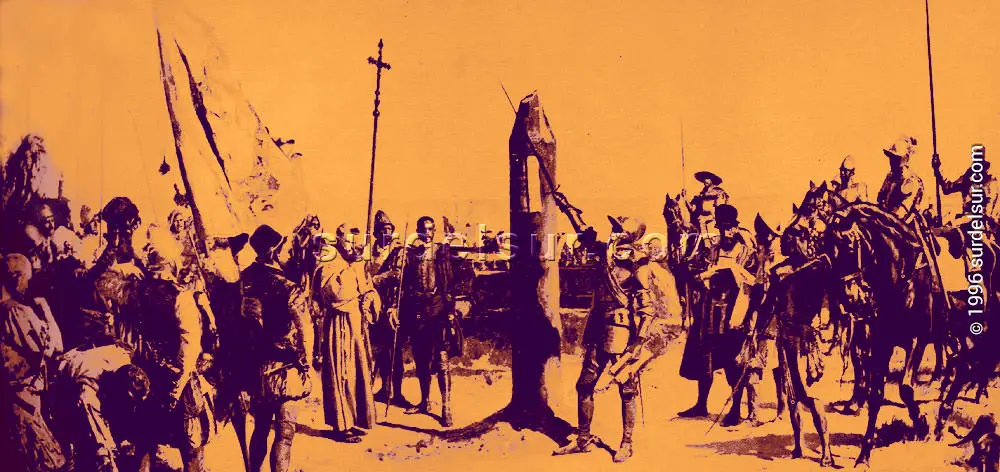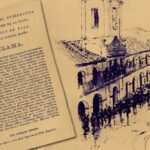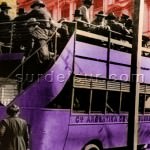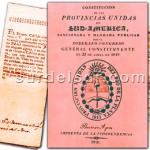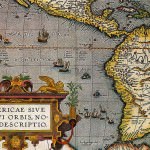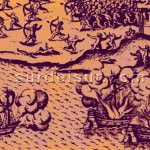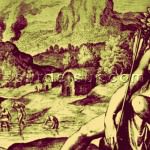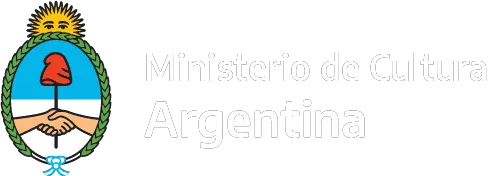The conquest and colonization of the Río de la Plata relates to the discovery, conquest, and colonization of the current Argentine territory, by the Spanish Empire. Until then our territory was inhabited by a sparse indigenous population, composed mostly of nomadic aborigines.
To learn more about who were the people in our territory before the Spanish conquest, see the report: The First Settlers of Argentina and Indigenous Peoples of Argentina. For more information on Spanish settlers article Spanish conquest and population approaches the subject.
The subject that we are going to treat here in a tight synthesis refers to the historical period that includes the discovery of America by Christopher Columbus in 1492; the discovery of the Río de la Plata by Juan Díaz de Solís in 1516; the foundation of the Sancti Spiritu fort by Sebastián Gaboto in 1527; the first and second foundation of Buenos Aires by Pedro de Mendoza (1534) and Juan de Garay (1580) respectively; the foundation of the Viceroyalty of the Río de la Plata in 1776; until the defense of Buenos Aires, from the English invasions of 1806 and 1807, by the criollos who begin to write their history.
When Settlers came to South América
After the first travels by Columbus, in 1492, there were new expeditions. One of them, carried out by Amerigo Vespucci, Italian navigator, explorer, and cosmographer, in 1502 reached Cabo de la Vela in Venezuela. Amerigo Vespucci is credited with a leading role in the identification of America as a new continent. By that time, this area of the south was inhabited by different groups of indigenous peoples, who were mostly nomadic.
First Spanish discovery in Argentine territory
A short time afterward, in 1516, in a failed attempt to find a passage connecting the Atlantic Ocean to the Pacific Ocean, Juan Díaz de Solís had to end his expedition by discovering the shores of the Río de la Plata. It was in these lands that Solís found his death by the Indians.
Read the full story about Río de la Plata Discovery, available in Spanish >>
Sebastián Gaboto, his successor, arrived with a new expedition sent by the Spanish King, Charles V.
Conquest and Colonization of the Río de la Plata
Sebastián Gaboto, established the first Spanish settlement, Fort Sancti Spiritu, in 1527.
In 1536, the conquest and colonization of the Río de la Plata was left in the hands of Pedro de Mendoza, thanks to an agreement signed with Charles V. Two years later, Nuestra Señora del Buen Ayre was founded in the canyons of Río de la Plata (Plata River).
After Mendoza died in the sea, while returning to Spain, and the dismantlement of Nuestra Señora del Buen Ayre by the Indians, the Spanish Capital was moved in 1541 to Asuncion, Paraguay.
Foundation of Buenos Aires
The definitive founding of Buenos Aires took place in 1580, by Juan de Garay, who in turn colonized most of the Argentine territory.
The governorship was divided into two intendances in 1617, Asunción and Buenos Aires. From then on, different governors succeeded and the missionary activity became stronger. The rivalry between Spain and Portugal about the American colonies increased.
English Invasions
Meanwhile, after establishing the Virreinato del Río de la Plata in 1776, these lands began to stand out as a political and economic unit of some relevance, a fact that did not pass unnoticed by British eyes. Furthermore, the decline of the Spanish empire brought about the attempted invasions by England in 1806 and 1807. Nevertheless, the sudden English attack failed thanks to the strong resistance by the natives, who had begun to feel that these lands were their own.
We also suggest you check related to this report: Argentina before Becoming a Nation-State, The Foundation of the Argentine State, Argentine Modern State
References:
All graphic material in this report is edited digitally. The customized version by surdelsur.com shown on this page is performed based on the following documents:
- Gallet, Theodoor (Engraver). (1571-1633). Amerigo Vespucci [Allegory].
Moreno Carbonero, José (Painter). (1860-1942) Foundation of Buenos Aires by Juan de Garay [Oil]. Deliberative Council of the city of Buenos Aires. - Schmidl, Ulrich (Chronicler, Soldier, Traveller). (1510-1580). Indian attack on Buenos Aires, newly founded by Pedro de Mendoza [Engraving Detail]. Story of Ulrich Schmidl (1599), by Levinus Hulsius (Editor) (1546 to 1606). Nuremberg.



